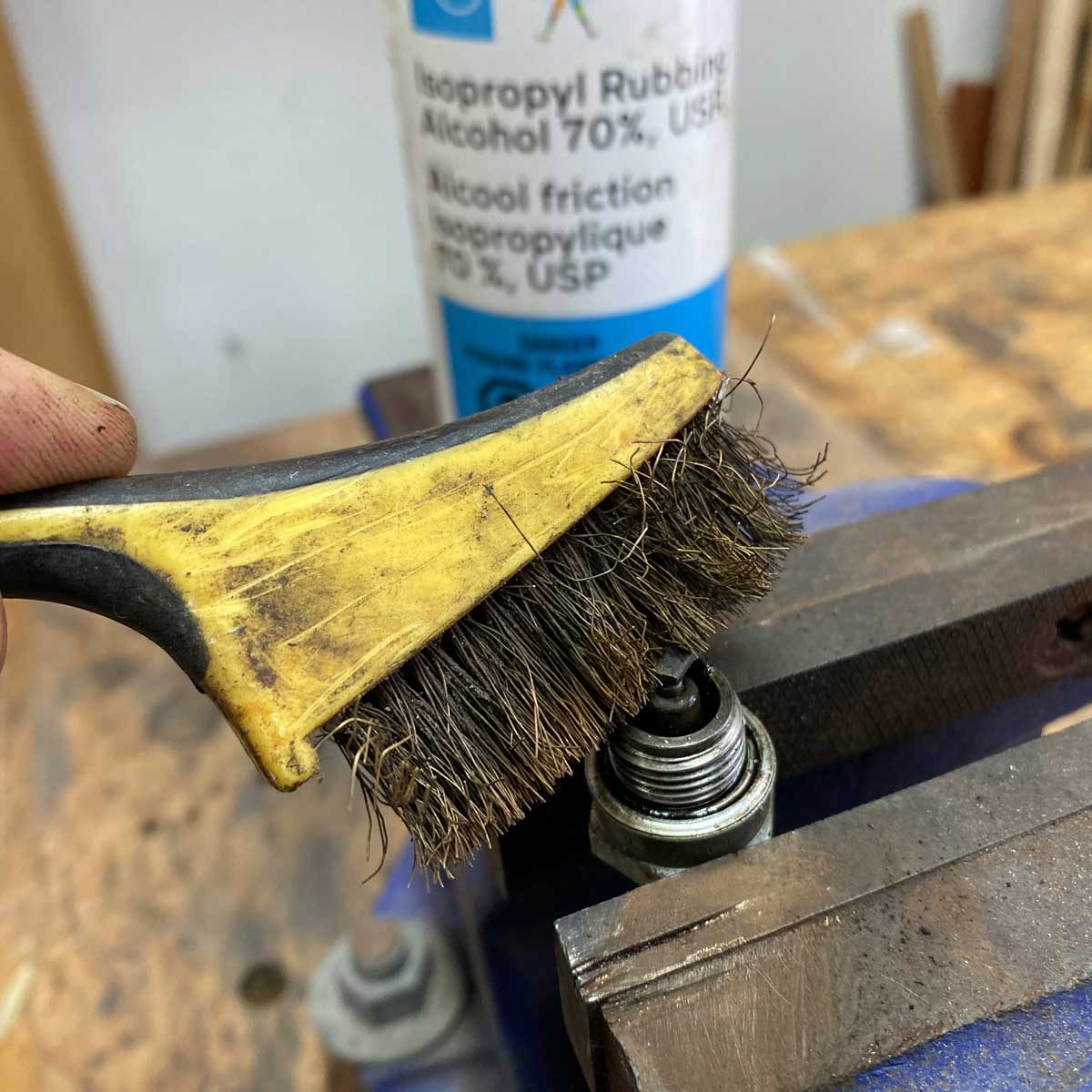All small engines have a spark plug, and cleaning spark plugs from time to time helps keep your equipment running smoothly. Let's do it!
An hour or less
Beginner
Less than $20
Introduction
Knowing how to clean the spark plugs on your small engines will save you the time and expense of traveling to a store to buy replacement plugs, and it could get you up and running when a new plug is not readily available. This cleaning job is simple. It takes less than 15 minutes and saves you the $5 to $10 cost of a new plug.
Tools Required
- Small brush
- Spark plug gap tool
- Spark plug wrench
Materials Required
- Rubbing alcohol
Project step-by-step (5)
Step 1
Remove the spark plug
- Remove any shroud or covering over the spark plug and use your fingers to pull off the thick wire that’s pressed onto the top of the plug. If the wire doesn’t pull off, rotating it slightly from side-to-side as you pull will help.
- Loosen and remove the spark plug using a spark plug wrench.

Step 2
Examine the spark plug
- Look at the end of the plug that’s normally inside the combustion chamber of the engine.
- The tip of the spark plug will tell you how cleanly your engine is performing. Dry light gray is ideal. Black fluffy deposits indicate an engine that’s running too rich. Wet oily deposits indicate an engine that’s burning excess crankcase oil or, in the case of two-stroke engines, burning gasoline with too much oil mixed in.

Step 3
Clean the tip
- Flood the tip of the plug with rubbing alcohol and let it sit for one minute, gap-end upward.
- Scrub the entire tip of the spark plug with a soft brass or plastic brush, applying more rubbing alcohol as needed to keep the tip wet. Clean as deeply as possible in and around the tip.
- Rub the tip with a rag to further clean it, then let the plug sit in the open air to dry. If the tip is clean, dry and free of debris, proceed to the next step. Apply more alcohol and scrub again if residue remains.

Step 4
Adjust the gap
- Test the width of the gap using a spark plug gap tool.
- Increase or decrease the size of the gap as needed based on engine manufacturer recommendations. All engine manufacturers publish specifications for spark plug gap in owner’s manuals and online. Small engines typically require a spark plug gap of 0.020 to 0.030 inches.

Step 5
Re-install the spark plug
- Use your fingers to thread the spark plug back into the engine. Follow up with a wrench for final tightening.
- Push the spark plug wire down over the end of the spark plug. Rotate the rubber boot a bit one way then the other as you’re pushing it in place to make sure the connection is secure.
- Replace any shroud or covering you removed earlier.
- Test your work by starting and running the engine.






















